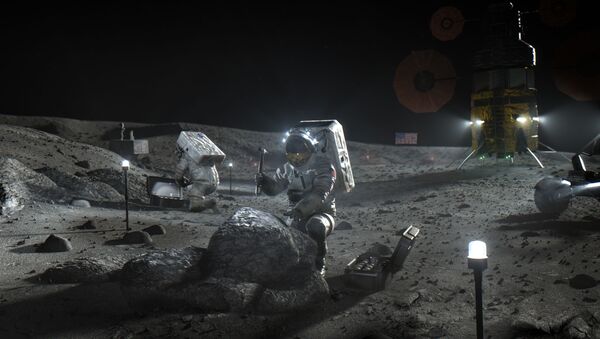NASA is to fund a project by Nokia via its Bell Labs research arm to build a 4G cellular communication network on the lunar surface, hoping the availability of the communications technology will support future manned space missions and help establish a sustainable presence on the moon.
The space agency is seeking to accelerate the development new technologies for living and working on the moon in order to have astronauts working at a lunar base by 2028, NASA Administrator Jim Bridenstine said.
"We need power systems that can last a long time on the surface of the moon, and we need habitation capability on the surface," Bridenstine said.
Nokia’s chief technology officer, Marcus Weldon, said: "We are now building the first ever cellular communications network on the moon.
"Reliable, resilient and high-capacity communications networks will be key to supporting sustainable human presence on the lunar surface," Weldon added.
Nokia says its lunar network will be different from what it uses on Earth, because the kit needs to be able to "withstand the harsh conditions of the launch and lunar landing, and to operate in the extreme conditions of space".
But, other than that, it will be normal 4G, including a base station, radio antennas, and user equipment.
NASA noted in its contract award announcement that the technology needed to operate at greater distances, increased speeds and provide more reliability than current standards.
Having cellular service on the moon could support communication between lunar landers, rovers, habitats and astronauts, said Jim Reuter, associate administrator for NASA's Space Technology Mission Directorate.
"The system would also extend to spacecraft," Reuter said. "With NASA funding, Nokia will look at how terrestrial technology could be modified for the lunar environment to support reliable, high-rate communications."
NASA hasn't decided on a landing site for the agency's Artemis missions, but Bridenstine reiterated that the target is a site near water-ice deposits on the lunar South Pole.
The $14.1 million project is part of $370 million in new contracts for lunar surface research missions awarded by NASA as part of the space agency's Artemis programme.
The contracts are geared toward NASA's Tipping Point program, which funds technologies that, if proved successful, are likely to be adopted by private industry.
"We want to build the [lunar] infrastructure...that is going to enable an international partnership for the biggest, broadest, most diverse inclusive coalition of researchers and explorers in the history of humankind," Bridenstine said.
Most of the money went to large space companies like SpaceX and Blue Origin. The two private spaceflight companies, owned by tech entrepreneurs Elon Musk and Jeff Bezos respectively, have been given the nod to develop the new lunar landers which will take the astronauts to the surface of the moon from orbit. The will develop competing systems in parallel, alongside a third company called Dynetics, with NASA then choosing the winning design.
Other technologies funded as part of the Artemis program include demonstrations of lunar surface power generation and energy storage.
The Artemis programme is named after the mythological sister of Apollo, the name given to the first manned lunar program in the 1960s. The aim of the the Artemis program is to land the first woman and the next man on the lunar surface by 2024.





